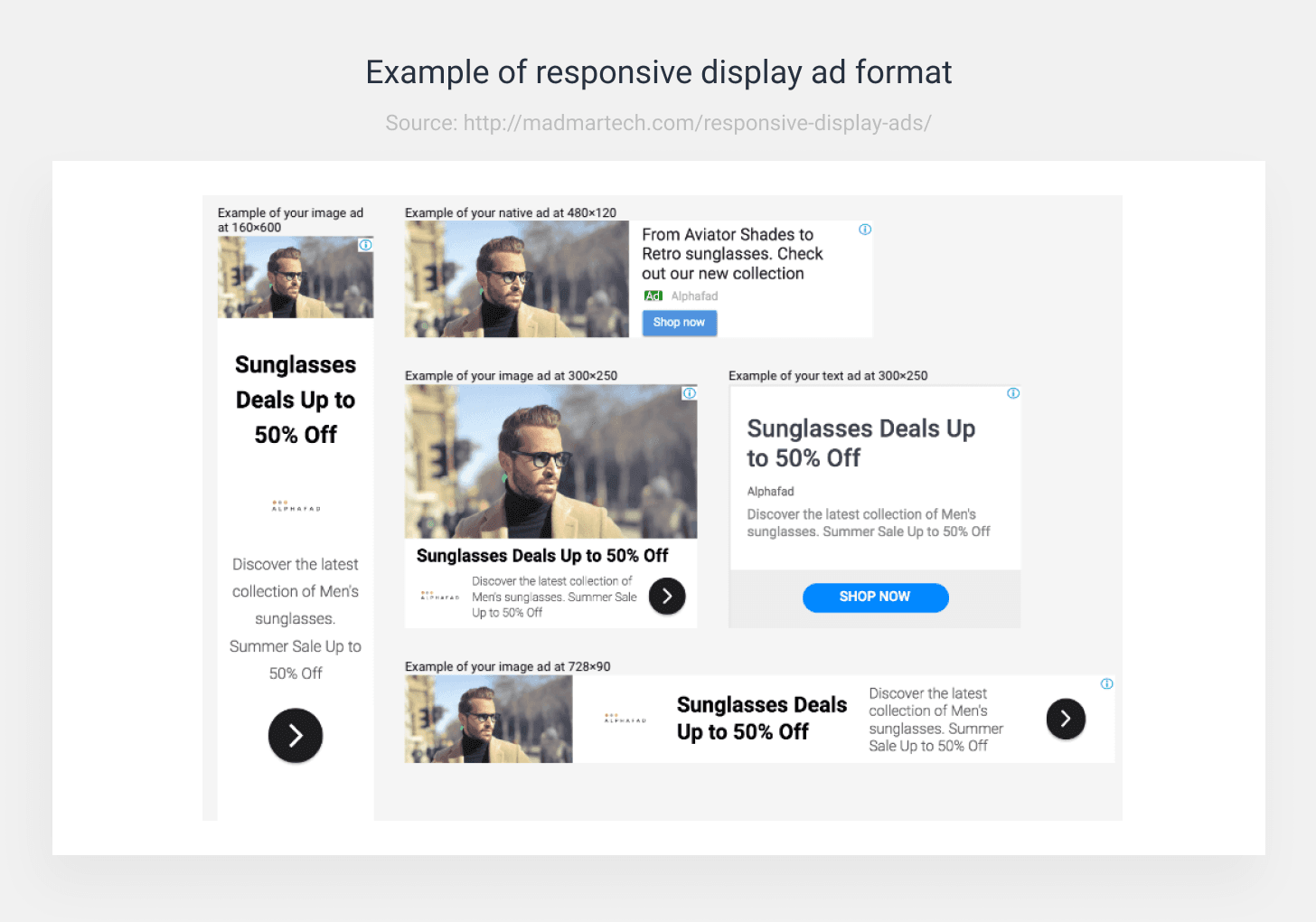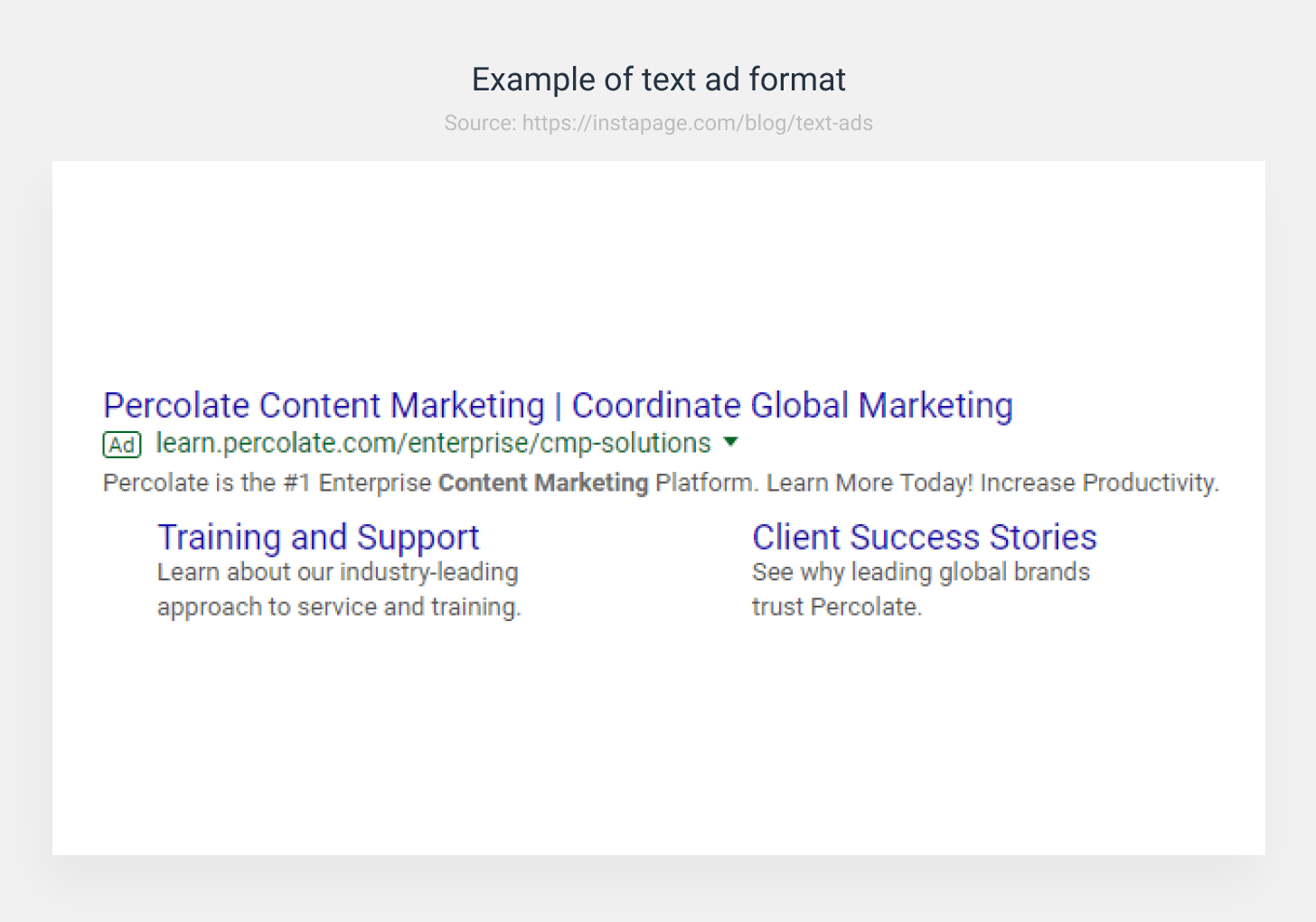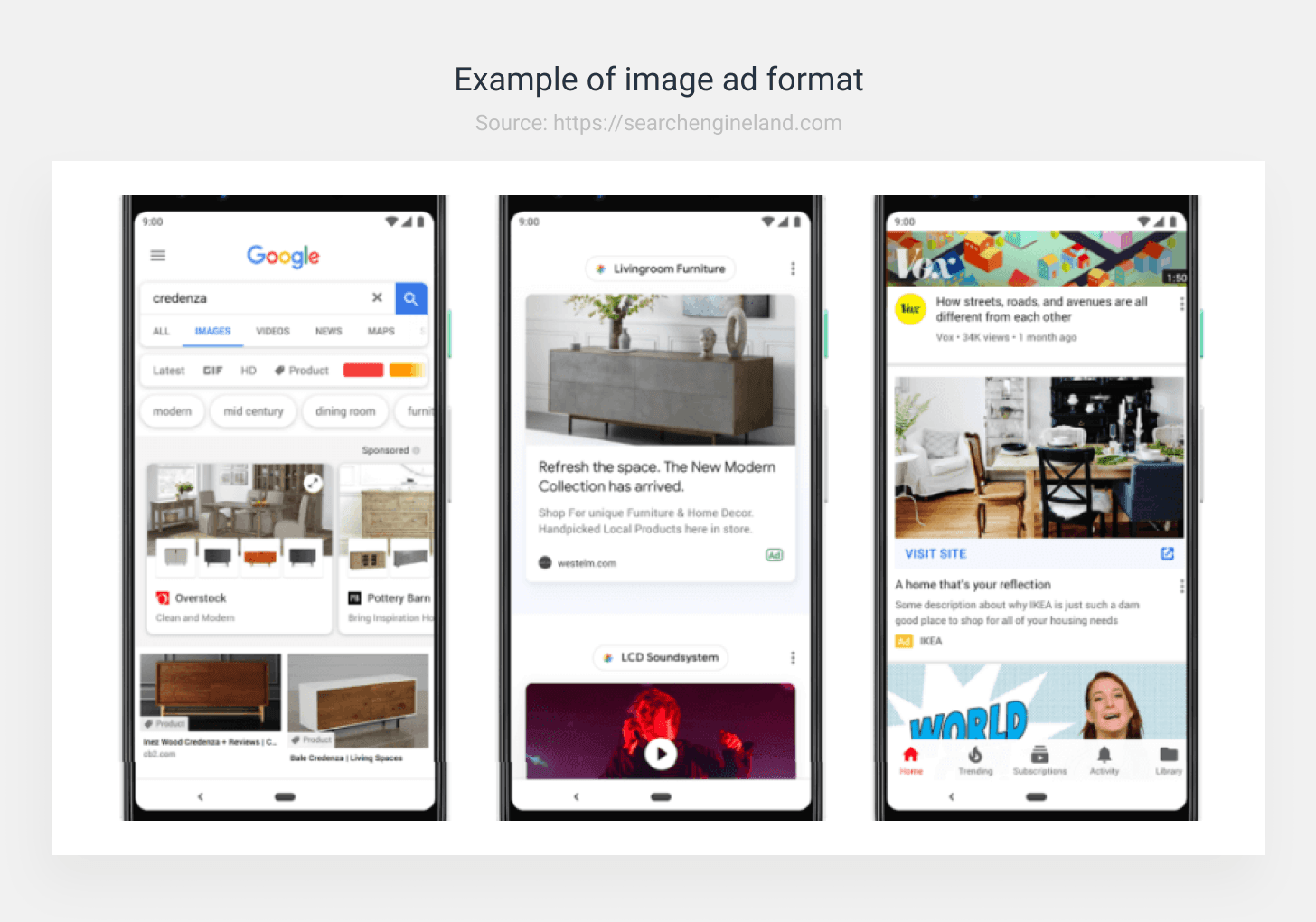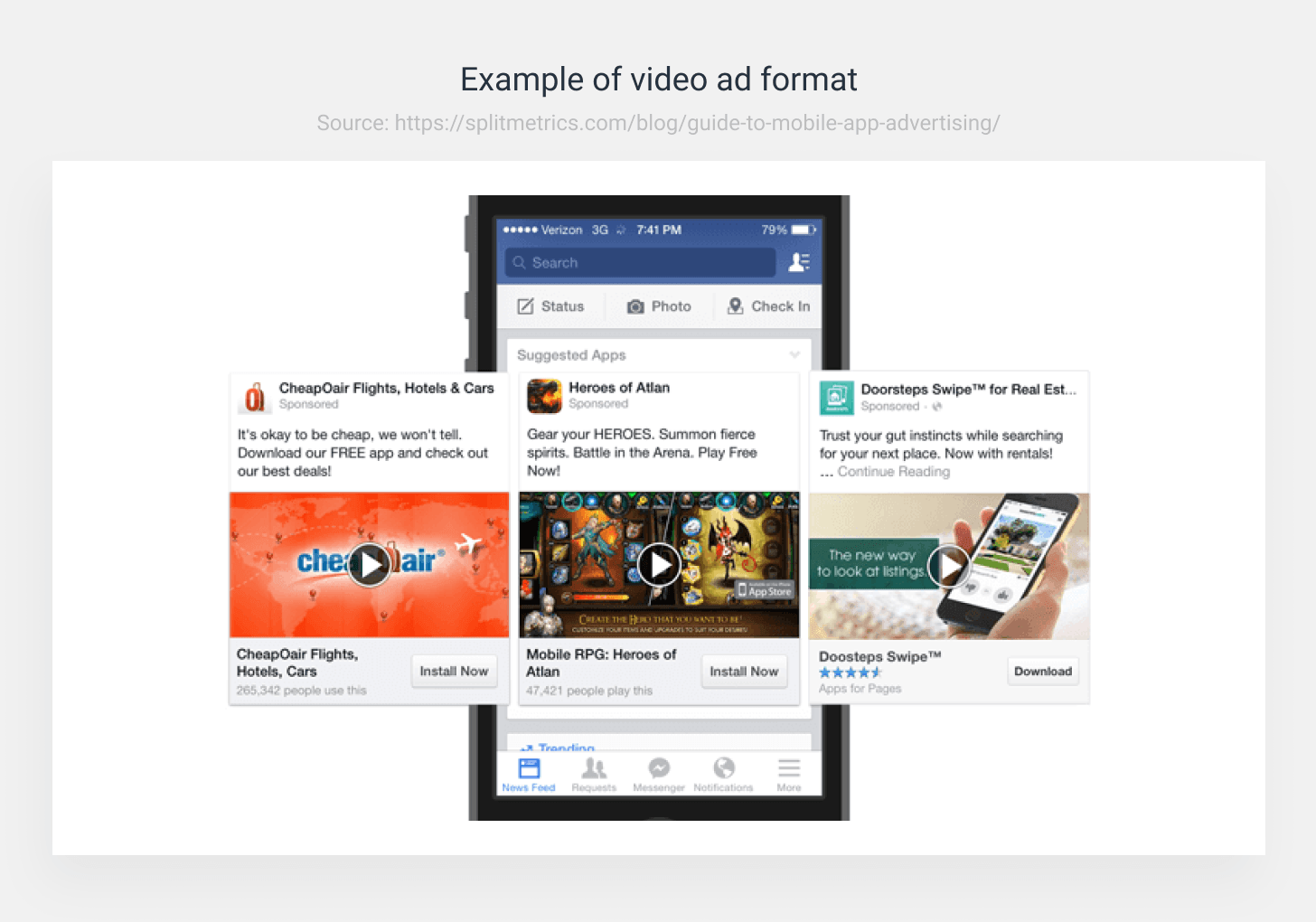Which Ad Format is Recommended for Driving Action?
It is impossible to call yourself a business owner these days and not know the basics of ad format for traffic optimization. The optimized combination of organic and paid traffic acquisition is the key to making sure that your business thrives in today’s modern market.

Jan 19 2021 ● 6 min read

In this article, instead of focusing on specific platforms, we would discuss ad formats recommended for several platforms like Facebook, Instagram, YouTube, Google, and more. To determine which ad format is recommended for driving action, you need to understand why you need a specific ad format.
The reason you should be concerned about which Ad format is recommended for driving action on your platform of choice is to ensure that your potential and targeted customers are seeing exactly what you want them to see. Regardless of the social media platform that your business leverages, you can maximize your ad conversion potential tremendously with the right ad format and ad placement techniques.
The recommended ad type for driving action is the responsive display ad format. This article discusses the fundamentals of responsive display ad types, their advantages, and how they are implemented effectively.

Responsive Display Ads
The ever-changing and dynamic nature of social media platforms, as well as other advertising platforms, has made it necessary to have a responsive display ad regardless of the type of ad that you choose.
What is responsive display Ads
Thanks to the constantly improving search algorithms employed by Google and social media platforms, most viewers can view most ads in ways that are optimized for the medium through which they are seen. Responsive display ads adjust their format, style, appearance, and size to fit the platform and device on which they are viewed.
Therefore, the same ad can be displayed as a large massive piece on a computer and be very small on a phone screen. This is achieved with the use of powerful algorithms like Google Display Network to choose the right ad format to show an audience depending on the platform and device used.
Responsive ad formats allow users to upload various versions of the same ad and picks the right one to show the user based on the platform or device used. For instance, Google Display Network allows a user to create a display ad by uploading up to 15 images and a maximum of 5 logos while using headlines with less than 30 characters (ranging from 1 to 5 maximum headlines) and one to five ad descriptions of less than 90 characters each. The user also gets to upload a URL link and the brand name.
Responsive display ads can be made up of text, image or video, or a combination of all three ad types.
How do responsive display ads differ from static ads?
While static ads often do not change to fit the size and functionality of the device or platform on which they are displayed, responsive ads take these factors seriously. Google or any other ad company analyzes the specs of your responsive ads and picks the ones that match the needs of the platform or device of choice. Therefore, while on a platform, a video ad may be more appreciated, a truncated version of the same ad might be more appropriate for the SERP of Google.
Why should you use a responsive display ad format for your campaigns?
Ad Optimization
Responsive display ads allow a business owner to optimize the screen real estate available to a potential or existing customer by arranging the content of an ad in ways that optimizes the use of space. The best part is that you don’t have to worry about the technicalities behind these forms of placements. All you have to do is provide the necessary content such as images, video, headlines, and logos and let your platform of choice handle the rest for you. These optimized ads are likely to drive action among your potential customers than static ones.
Cost Optimization
By creating responsive display ads, you can save the cost of customer acquisition through the use of effective advertisement and customer awareness. In the long run, it means you only have to pay for the design and content development of your responsive ads once and sit back while it gets optimized for different platforms and devices.
Dynamic Marketing
Responsive ads in the form of video and images can be customized in ways that make them dynamic and, in most cases, interactive to your potential customers or audience. These forms of ads can be useful in converting potential visitors into customers with just a few clicks.
Extended Customer Reach
Since your ad format is automatically optimized for various platforms and devices, it means the same ad can extend the reach of your business to potential customers on varying platforms and devices. Google determines what ad type is appropriate for the audience’s device.
Types of Ad formats that can be leveraged as Responsive display Ads
Regardless of the platform that you intend for your ads to be displayed, Google Display Network, or one of the many social media platforms, there are three main ad types that an advertiser needs to utilize.
The three ads types are:
- Text ads
- Image ads
- Video ads
Text Ads
Text ads are the simplest and most basic ad format used for advertising. Text ads are easy to create, and when done right, can produce high traffic returns for very little cost. The only skills required to create text ads are creativity and a reasonable budget.
Components of text ads include a headline, display URL, and ad description. Several platforms have their own guidelines for properly setting up a responsive text ad. Google, for instance, requires that you have a captivating headline not more than 30 characters long (3 headlines maximum), one display URL that links to the landing page of your business, and at least one ad description that describes the essence of your ad.
It becomes a responsive display ad when the text can be adjusted for various devices and platforms.
Image Ads
The world is obsessed with visual graphics, and it is understandable. While a text ad format can be very useful, image ads are very appealing and have better potential of drawing in potential customers. To create advertisement campaigns that are responsive, all you need are images that describe your services in very appealing ways.

Dynamic images are common on social media platforms and other display networks for their effectiveness and low-cost nature. Platforms like LinkedIn and Instagram are very well-optimized for images. Image ad formats can be presented in GIF, HTML5, or Flash formats. Static or animated images accompanied by call-to-action texts are very great ways of obtaining new customers and keeping existing ones.
The images used for dynamic placements depend largely on the intended device and platform on which they would be displayed. One of the best things about images is their tendency to stick with the potential customer at a glance, even when the person has not read the description. Also, image ads have been shown to have a higher click-through rate than text ads when presented in a responsive format.
Several ways of optimizing an image ad involve taking the time to create, tweak, and experiment with your ad until it matches the color of the image and your text. You can improve the click-through of your ad by using custom images.
Video Ads
Yes! It is true that, for the most part, videos are more expensive to create and edit. However, the potential returns on responsive video ads can be so tremendous that it offsets the cost of making it very massively. Research has also shown that many people are more comfortable learning about a service or a product through video ads than texts or images. Therefore, video ads are the most recommended for driving action on most platforms.
The most popular platforms to make use of a video ad include YouTube, Instagram, and Twitter. YouTube is such a heavy powerhouse for advertisers as it attracts up to 2 billion users monthly and has a high potential for driving customer action.
The reliance of many businesses nowadays means that the competition in the video ad space has grown tremendously. For your video ad to stand out, it needs to be properly crafted and formatted to suit the platform and device of your potential customer. Key factors to take note of include playtime, cost, format, and responsiveness.
There are four common video ad formats on YouTube; they are:
- Skippable in-stream: these are the ads that can be skipped by the viewer. These types of ads play before or during a video. It is very important to capture the attention of a potential customer during the first 5-8 seconds of the ad for higher customer conversion potential.
- Non-skippable in-stream: These types of ads have no skip buttons and are usually less than 15 seconds but not less than 6 seconds long. They are usually short and creative ads that convey information quickly and effectively.
- Discovery: Discovery ads used to be called in-display ads, and these appear on top of organic results as part of the SERP of a user’s search query.
- Non-video: These are usually text or image placed on top of videos, therefore, eliminating the need to create your own video. These ads can be as effective as video ads as long as they are created with the needs of the potential customer in mind.
The best ad format recommended for driving action on your website involves the proper use of video, image, and text ads in responsive formats. By using text, image, and video for your advertising campaign where appropriate, you can easily optimize your content for better conversion. If you want help with implementation, you may also look for ppc consultants who help you get through and achieve the best results.
FAQs
- What other types of ad formats are there?
Some of the other formats of advertisement used for driving customer actions include TrueView ads and Lightbox ads. These formats allow both image ads and video ads. - How do you use YouTube video ads to drive conversion?
TrueView can be used to add in-stream ads that play before or during videos. These videos can be skipped after 5 seconds. These in-stream ads can either appear on Google’s Display Network or on YouTube. Other forms of ad placement facilitated by Trueview includes Bumper and outstream and discovery ads.
Published on Jan 19 2021

WRITTEN BY
Gintaras BaltusevičiusGintaras is an experienced marketing professional who is always eager to explore the most up-to-date issues in data marketing. Having worked as an SEO manager at several companies, he's a valuable addition to the Whatagraph writers' pool.